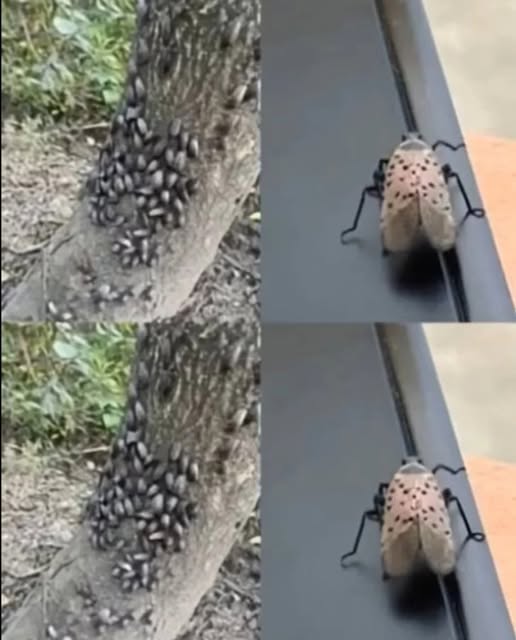The spotted lanternfly (Lycorma delicatula) is an invasive insect first found in Pennsylvania in 2014. It has since spread rapidly, threatening crops, trees, and ecosystems. How They Harm Plants Lanternflies pierce plants to suck sap, weakening them and making them vulnerable to disease. They also excrete honeydew, which promotes black sooty mold that blocks sunlight…
The spotted lanternfly (Lycorma delicatula) is an invasive insect first found in Pennsylvania in 2014. It has since spread rapidly, threatening crops, trees, and ecosystems.
How They Harm Plants
Lanternflies pierce plants to suck sap, weakening them and making them vulnerable to disease. They also excrete honeydew, which promotes black sooty mold that blocks sunlight and disrupts photosynthesis.
What They Look Like
Adults: Gray wings with black spots, red underwings
Nymphs: Black with white spots, turning red as they mature
About 1 inch long
What They Target
These pests feed on hardwood trees, fruit trees (like grapes and pears), and crops, with vineyards especially hard-hit.
Why It Matters
Beyond damaging plants, lanternflies harm biodiversity and urban greenery. Their spread affects both rural and city landscapes.
What You Can Do
Kill on Sight – Crush any you find.
Destroy Eggs – Scrape off mud-like egg masses into alcohol or bleach.
Report It – Notify local agriculture authorities.
Inspect Before You Move Items – Especially furniture, firewood, or vehicles.
Act Now
Stopping this pest requires everyone’s help. If you see one, act fast—squash it and report it. Together, we can slow the spread.
